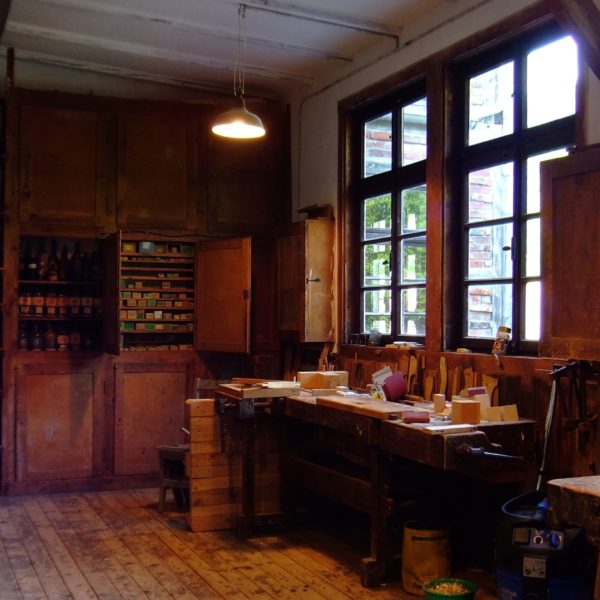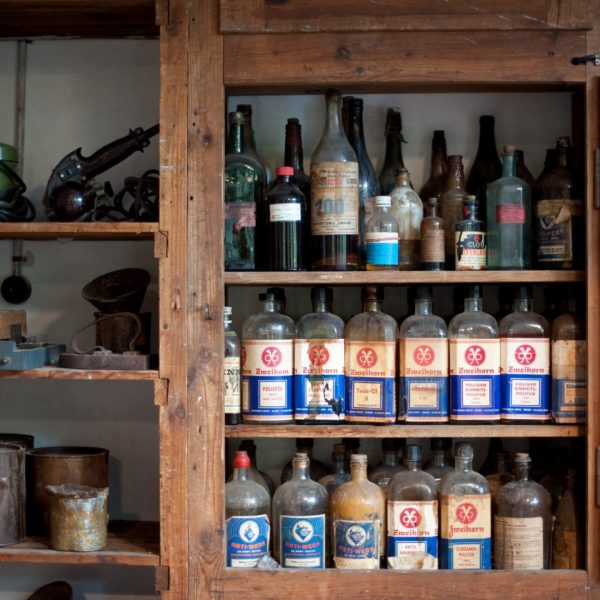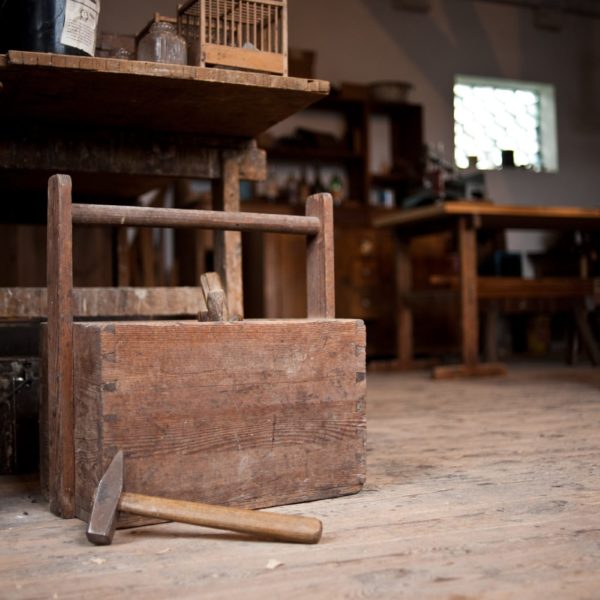Joinery from Fulda

Built: 1921
Disassembled: 1995
Reassembled: 1995 to 1997
This purpose-built workshop from 1921 illustrates the development of the joinery trade over six decades. Already in 1925, the originally two-storey timber-frame building was given a three-storey extension with a basement used, for instance, for storing veneered wood. Besides these alterations to the building, master joiner Franz Peter Fickler (1882 to 1948) bought further woodworking machinery. This allowed him to mechanize tasks which had to be done by hand previously, making it possible to offer additional services to customers.
The older building part’s knee wall was raised in 1936, which afforded some extra space. Now the building had two machine rooms on the ground floor and two bench rooms on the first floor, allowing the joiner to set up further benches for manual woodwork. The services provided ranged from furniture making and interior fittings to bespoke furnishings of entire churches.
After the owner’s death in 1948, his widow Karoline Mathilde Fickler (born 1914) took over the business. Two years later, she married the master joiner Emil Paul Hohmann (born 1912), who ran the workshop until it closed in 1983. After the Second World War, the business experienced a second upturn in business. In the years following, up to 14 journeymen and four apprentices worked in the joinery. With the increasing competition from industrially mass-produced furniture, the company’s work moved more into the direction of architectural carpentry. Mainly doors and windows were now made. Demand rose quickly for these, and bulk orders became more frequent. Since no further structural expansion was possible on the site, the owners were not able to take their company in a new direction in the late 1960s.
At the Open Air Museum, the joinery is presented in the state after the last modifications were made to the attic in 1955. The interior fittings, equipment and machinery are complete and fully functioning. Next to the workshop, there is a small solid wood store. The joinery is open on several days every year and is run by museum staff and dedicated volunteer joiners.




Mit dem Laden der Karte akzeptieren Sie die Datenschutzerklärung von Google.
Mehr erfahren



